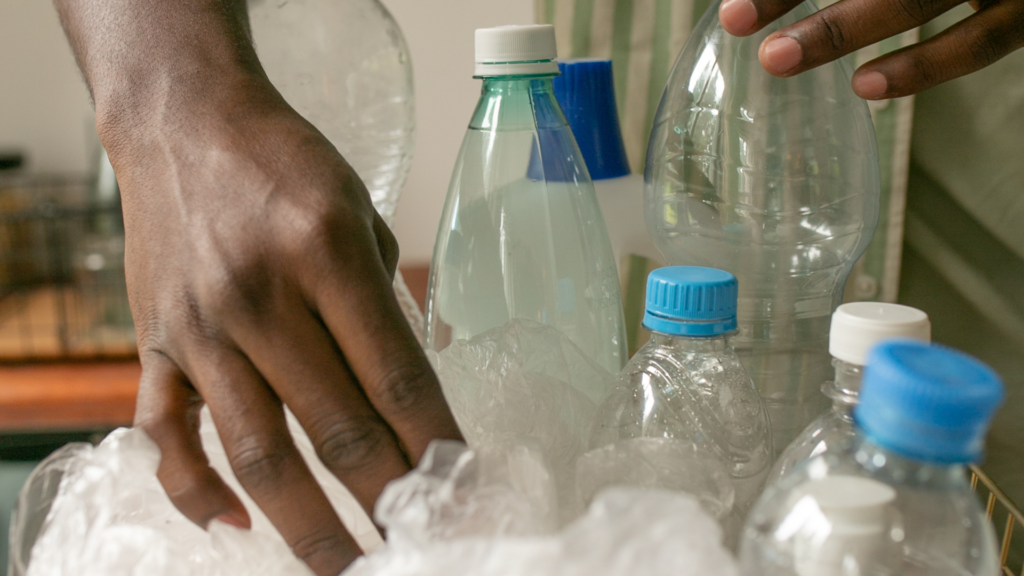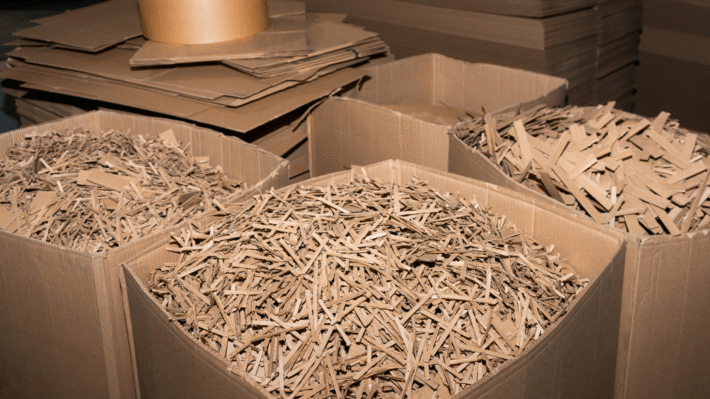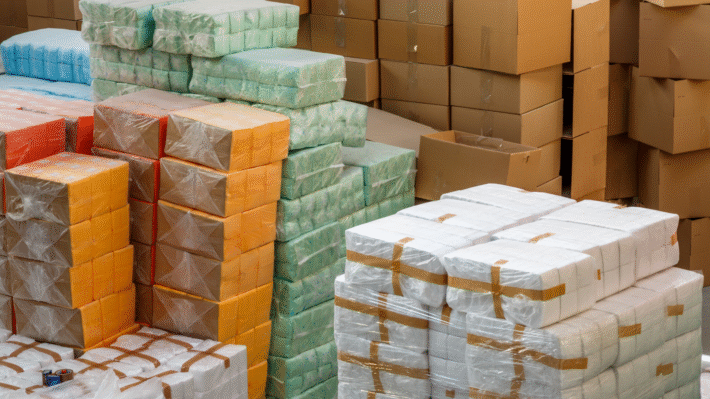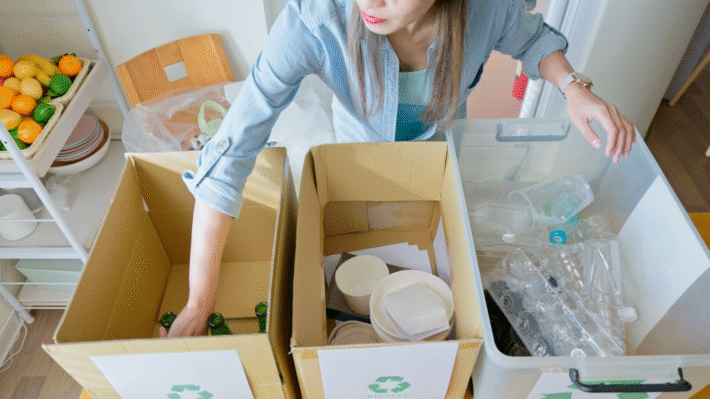Advanced Plastic Recycling Paving the Way for a Greener Future

Plastic recycling is a hot topic right now, and it’s more important than ever to find new ways to tackle the plastic crisis. Every year, the world churns out millions of tons of plastic, and the impact on our environment is staggering. From marine pollution to overflowing landfills, the challenges are vast and growing. Even the financial toll, with rising costs in waste management and dwindling resources, is hard to ignore.
Traditional recycling methods just can’t keep up. They’re often limited by degradation, contamination, and the types of plastics they can handle. Incineration and landfills also pose their own set of risks with emissions and long-term environmental harm.
That’s why advanced recycling solutions are so exciting. Imagine a world where plastics are part of a circular economy. Where even the hardest-to-recycle items are given a new lease on life. This vision for sustainable plastic management is not just possible, but it’s on the horizon, and getting closer every day. Let’s dive into the innovative world of recycling technologies and explore what’s ahead!
The Urgency of Plastic Recycling Innovation
Global Plastic Crisis
Plastic Production and Environmental Impact
The world produces a lot of plastic. Every year, about 380 million tons of plastic are made [footnote: European Parliament, 2022]. This number is huge and keeps growing. All this plastic is used in many things we use daily, like bottles and bags. But here’s the problem: a lot of this plastic ends up in the ocean. Plastic in the ocean is bad for sea animals and even people. Tiny pieces of plastic, called microplastics, can be found everywhere, even in our food! These microplastics hurt the environment in ways we are just starting to understand.
Economic Burdens of Plastic Waste
Dealing with plastic waste is really expensive. Why? Because we have to pay to pick it up, sort it, try to recycle it, and then get rid of what’s left. A lot of the money used in these ways comes from our local governments. That means they spend millions of dollars on plastic waste instead of using that money for other things, like building new parks. And when plastic waste fills up landfills, it takes up space that could be used for other types of garbage, costing more money to handle.
Challenges of Traditional Recycling
Limitations of Mechanical Recycling
Traditional recycling, the kind we all know, has some big problems. First, it can only handle certain types of plastics. Not all plastics can be recycled this way. Even if they could, plastic breaks down a little every time you recycle it, so it gets weaker and harder to use. Plus, if plastics are dirty or mixed up, it’s really hard to recycle them without making mistakes.
Issues with Energy Recovery
Some places burn plastic to get energy, but this is not a great solution. Burning plastic releases smoke and bad chemicals. These chemicals can make the air dirty and are harmful to us and the environment. Also, when we burn plastic, we can’t use it again, so we’re wasting resources that could have been reused.
Concerns Related to Landfilling
A lot of plastic ends up in landfills. This is not good! Plastics take a very long time to break down. They can sit there for hundreds of years, taking up space and sometimes leaking chemicals into the ground and water. All this time in landfills is not good for our planet, and it means we’re losing materials we could have reused or recycled.
Adopting Advanced Solutions
Circular Economy Goals
A circular economy is like a big cycle where we use things, recycle them, and use them again. This way, nothing goes to waste. When we make and use plastic in a circular economy, we keep using it over and over. This helps save resources and makes the process of managing waste much easier.
Innovations for Hard-to-Recycle Plastics
Some plastics are hard to recycle. But we can find new ways to manage them. Scientists and engineers are working together to create new ways to break down these hard plastics so they can be reused. They’re also creating new technologies that are better at sorting out different kinds of plastics. All these new ideas could help us reduce waste and make a big difference in how we handle plastic.
Chemical Recycling: Molecular Transformation
Fundamentals of Chemical Recycling
Understanding Polymer Breakdown
Chemical recycling is like magic for plastics. It takes big plastic molecules called polymers and breaks them down into smaller pieces called monomers. Imagine building blocks of a tower, taking them apart, and using them again. This process is special because it helps make even the yuckiest plastic useful again. By using methods like depolymerization, solvolysis, pyrolysis, and gasification, we can take apart the molecules and turn them into something new!
Difference from Mechanical Recycling
Now, chemical recycling is different from what we call mechanical recycling. In mechanical recycling, we pretty much cut plastics and melt them down. But here’s the catch – every time plastic is mechanically recycled, it gets worse. It’s like using a crayon over and over; it just doesn’t color as nicely. With chemical recycling, we get brand-new crayons each time because we’re making fresh polymers without the imperfections.
Exploring Chemical Recycling Processes
Depolymerization Techniques
Depolymerization is a neat word, isn’t it? It means turning polymers back into monomers. This can be done with cool methods like hydrolysis, glycolysis, and methanolysis. These are like magic spells for plastics, helping us reuse tricky polymers like PET (think drink bottles) and polyurethane!
Solvolysis Methods
Solvolysis uses a helper called a solvent – like the stuff that dissolves sugar in tea – to specifically dissolve certain plastics. It picks out plastics like we pick peas out of a veggie mix. This ensures we get only what we want and nothing else.
Pyrolysis and Gasification
Pyrolysis and gasification are super cool! Imagine a hot oven with no oxygen. That’s pyrolysis, where plastics are heated in such a way that they break down into oils, gases, and char. On the other hand, gasification uses very high heat to convert plastics into a special gas called syngas. This gas can be used for energy and making new chemicals.
Advantages and Challenges
Handling Mixed Plastics
One of the best things about chemical recycling is dealing with mixed and yucky plastics. Plucking different plastics from the trash pile can be super tricky. Chemical recycling, however, is like a superhero that doesn’t mind the mess and gets the job done by producing high-quality recycled materials.
Energy and Economic Considerations
But there’s a catch! Chemical recycling can gobble up a lot of energy, which can be expensive. Like a giant vacuum cleaner that needs lots of electricity, we need to ensure this process doesn’t cost more than it’s worth. This means making it work on a large scale, so it saves money and helps our Earth.
If we get this recipe right, we can make recycling a win-win for our wallets and our world!
Advanced Plastic Recovery: Enhanced Sorting and Separation
Innovative Sorting Techniques
AI for Automated Sorting
AI for Automated Sorting is changing the way we handle plastic waste. You know, there’s a lot of plastic types out there, and they’re all mixed together. But AI, or Artificial Intelligence, helps by teaching machines to spot different plastics. This means plastics get sorted faster and more accurately. For instance, AI uses cameras and special sensors to see what kind of plastic something is, sorting them super-fast. This ensures less plastic ends up in landfills and more gets recycled well. Check out more about AI sorting here.
Robotic Sorting Systems
Robotic Sorting Systems are like helpers in recycling plants. These robots are smart. They don’t just stand around – they pick up and sort plastics based on what AI tells them. Imagine a game of catch, but for robots: they pick, sort, and place plastics where they belong. Robots can work all day, and they don’t get tired. This helps make recycling faster and cheaper. You can learn more about these cool robots here.
Separation Methods for Plastics
Density and Electrostatic Separation
Density and Electrostatic Separation are techniques that help sort plastics. Density separation is like a magic trick with water or air. Plastics get put into a special bath, and because each plastic type is a bit different, they float at different levels. This helps separate them. On the other hand, electrostatic separation uses electric charges. Imagine rubbing a balloon on your hair and making it stick; it’s a bit like that but way cooler. These methods ensure cleaner and better-separated plastics. Dive into more about these processes here.
Selective Dissolution for Polymers
Selective Dissolution for Polymers is like making a puzzle easier by breaking down tricky pieces. It uses special liquids to dissolve only certain types of plastics. This means you can recover useful plastics without mixing them up. It’s perfect for tough-to-recycle plastics, ensuring they get new life instead of trashing them. Want to know more? Check it out here.
Future Material Recovery Facilities
Smart and Decentralized MRFs
Smart and Decentralized MRFs are what we call the recycling centers of the future. They’re “smart” because they use AI and robots to sort and separate plastics efficiently. “Decentralized” means there are more of them in more places, instead of just big plants far away. This cuts down travel costs and saves the planet. Overall, they bring recycling closer to where the waste is. This improves efficiency and offers better recycling opportunities for communities. Read about future facilities here.
Technology Integration in MRFs
Technology Integration in MRFs stands for bringing cool, new tech into recycling centers. This means using smart computers, robotic arms, and sensors to make the centers work better. The goal is to make recycling so much easier and faster. This also helps in tracking all the recycling data, ensuring no time or resource is wasted. With tech at its heart, MRFs of tomorrow will recycle like never before, ensuring less waste and more savings. Discover innovations here.
Emerging Technologies and Novel Approaches
Biological Recycling Techniques
Enzymatic and Microbial Plastic Breakdown
Biological Recycling Techniques harness the power of nature to tackle plastic waste. One exciting advancement in this area is enzymatic and microbial plastic breakdown. Scientists have discovered that certain enzymes and microbes can munch through plastic. They turn the long chains of plastic into simpler pieces. This process is seen in nature but now is being explored in labs around the world to speed up and expand these processes for industrial use.
By using nature’s own garbage disposals, we aim to make low-energy, eco-friendly recycling solutions. These findings help us think about alternatives that consume less energy and fit in better with the environment. This method is seen as a promising path to handle plastics efficiently without the side effects of traditional recycling methods that require loads of heat and chemicals.
Eco-Friendly Recycling Solutions
In addition to microbial breakdown, new eco-friendly recycling solutions are sprouting like wildflowers. These methods focus on using minimal resources and causing little harm to Mother Earth. It includes not just how we recycle, but also the materials we use in making plastics in the first place. For example, creating easily degradable plastics made from plants or waste can drastically cut down the recycling challenge before it even starts.
Upcycling and Value-Added Products
Creating Higher-Value Materials
Upcycling and value-added products is an exciting concept where we transform old plastic into something new and better. We can take plastic that would have been trash and convert it into high-value goods. Designers and engineers are working hand-in-hand to develop products that are not just reused but undergo a transformation into superior items. This process can take plastic bottles and turn them into durable construction materials or even clothing.
3D Printing with Recycled Plastics
Another thrilling application is 3D printing with recycled plastics. Through this method, discarded plastics can be converted into 3D printing filament. This technique not only finds a new use for plastic waste but also opens possibilities for creating any object imaginable, from toys to parts of a rocket. It’s a smart way to give plastic as many lives as possible, preventing unnecessary waste and creating innovative products.
Closed-Loop Recycling Systems
Product Design for Recyclability
In closed-loop recycling systems, the goal is to ensure every product is made with its end in mind. Product design for recyclability means that from day one, a product is structured to be easily disassembled and recycled. This way, instead of ending up in a landfill, every component of a product can be reshaped or reused in something new. Designers might use less complex combinations of materials or label parts clearly, making recycling straightforward.
Integration into Production Lifecycles
Furthermore, integration into production lifecycles ensures recycling becomes an integral stage in manufacturing. This involves redesigning the journey a product takes from creation to disposal and back to creation again. It requires companies to think about recycling as part of their everyday process, not an afterthought. By doing so, companies save resources, manage costs better and contribute to a sustainable future by minimizing raw material usage.
Digitalization and Traceability
Blockchain for Material Tracking
On the digital front, using blockchain for material tracking provides exceptional transparency and traceability. Blockchain can keep a record of every step a piece of plastic takes—from its birth to recycling and rebirth. This helps ensure every ounce of material gets accounted for and recycled, creating more responsibility among manufacturers and consumers alike. It acts like a ledger that tracks the journey of plastic, helping businesses and users keep tabs on their waste and its transformation.
IoT in Waste Management
The Internet of Things (IoT) in waste management employs sensors and smart technology to improve collection and recycling efficiency. With IoT, bins can notify waste companies when they’re full, helping optimize collection routes and reduce unnecessary trips, hence lowering emissions. This tech-savvy approach streamlines operations and effectively reduces waste, making recycling systems smarter and more environmentally friendly.
In the face of plastic pollution, these emerging technologies and approaches are galloping full speed to turn the tide. They promise a future where plastic isn’t a problem but a resource—used, transformed, and reused, continuously benefiting everyone across the globe.
Environmental and Economic Impacts
Environmental Benefits of Recycling
Reducing Pollution and Waste
Plastic is everywhere. It’s in our oceans, our streets, and even in tiny pieces in the air. Recycling helps reduce this pollution. By turning old plastic into something new, we keep it out of landfills and the ocean. This also means less waste in dumps, which can take hundreds of years to break down. Recycling plastic helps cover our tracks—making less trash, cleaning our Earth, and making the world a better place.
Conserving Resources and Energy
Recycling saves our planet’s resources. When we recycle, we use less raw material, like oil. Less raw material means less mining and drilling. Recycling uses less energy than making brand-new products. For example, making new plastic from recycled plastic can save up to 70% of energy. That’s like turning off a lot of lights! When we use less energy, we keep our planet greener and cleaner. To learn more about conserving resources through recycling, check out this article.
Economic Gains from Recycling Innovations
New Markets for Recycled Plastics
With new recycling methods, there are exciting opportunities for businesses. We can create new products from recycled plastics, like cool clothes, stylish furniture, and sturdy building materials. These new products create fresh markets and open doors for businesses to explore creative ideas. Imagine plastic waste turning into exciting new things we can buy and use every day!
Cost Effectiveness and Job Creation
Recycling also means jobs. More recycling factories mean more people needed to run them. This creates jobs for workers, engineers, and even scientists looking for new ways to recycle better. It can also save money. Recycling reduces the costs of waste management and places less stress on our dumping sites. With recycling, we have both more jobs and more savings—a win-win for everyone! For more details on how recycling can impact employment, check this source.
Life Cycle Assessment and Sustainability Metrics
Measuring Environmental Impact
Measuring how recycling helps the Earth is important. We use tools like Life Cycle Assessment (LCA). This helps track the environmental impact from start to finish, from raw material to recycled product. It shows us how recycling reduces pollution, saves energy, and conserves resources. With LCA, we make sure recycling does its best to protect our planet.
Metrics for Circularity and Sustainability
We need ways to measure how sustainable our recycling is. That’s where metrics come in. They help us track how much of our waste gets another life as new products. Metrics show us how close we are to a circular economy, where there’s no waste, only resources used again and again. With these tools, we aim to use all resources wisely, paving the path for a sustainable future. Discover more about sustainability metrics here.
Implementation, Policy, and Public Engagement
Developing Infrastructure for Recycling
Building Advanced Recycling Facilities
Building Advanced Recycling Facilities is an essential step in enhancing our environment. These facilities are key to turning old, used plastics into new products. To make this happen, we need big buildings with high-tech machines. These machines break down, sort, and reuse plastic materials. But building these places costs a lot of money. They need a team of smart workers and experts to run them. Investing in such facilities is crucial for maximizing recycling efficiency and reducing waste.
Efficient Collection and Logistics
Efficient Collection and Logistics play a huge role in making recycling successful. Imagine a system where every piece of plastic gets picked up and sent right to recycling centers. This means having well-organized trucks and smart routes to make sure no plastic gets lost. It’s like a team of superheroes sweeping the city. With a plan like this, we can save time and fuel and collect more plastic for recycling.
Creating Supportive Policy Frameworks
Extended Producer Responsibility (EPR)
Extended Producer Responsibility (EPR) is like giving homework to those who make and sell products. Why? Because they should also help clean up the mess! EPR means companies have to think about what happens to their products when they’re no longer needed. This makes companies think more about recycling and using materials that are easier to recycle. So, EPR is like a gentle push to make everyone responsible for keeping Earth happy and clean.
Incentives for Recycling Innovations
Incentives for Recycling Innovations are special rewards for thinking big. When people come up with amazing ideas to make recycling better, they deserve a high-five! Governments can help by giving money or prizes to these smart people. This encouragement leads to new technologies and ideas that make recycling more fun and effective. It’s like a race where everyone wins when we work together to help the planet.
Public Education and Awareness
Consumer Education on Recycling
Consumer Education on Recycling is about teaching everyone, including you, how to recycle right. It’s like going to school to learn about superheroes. Being educated means knowing what goes in the recycling bin and what doesn’t. Schools, TV, and social media can spread the word. Once people know the right way, recycling becomes a habit that makes the world a better place.
Community Engagement Initiatives
Community Engagement Initiatives are like big neighborhood parties with a green theme. These programs bring people together to talk about recycling, share ideas, and make a difference. You can have workshops, clean-up days, or even fun challenges to see who can recycle the most. By working together, communities become proud recycling champs, helping everyone stay committed in preserving the planet for future generations.



